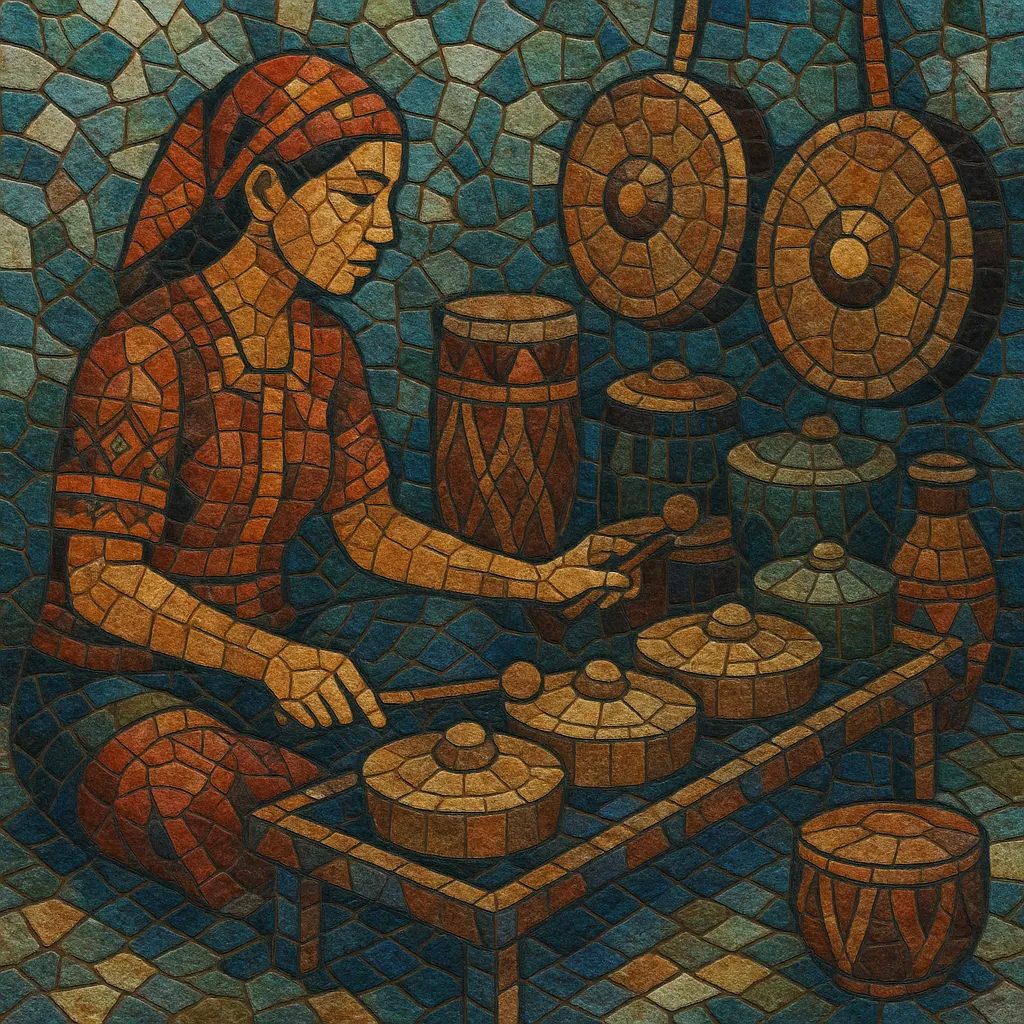Kulintang is a gong-chime ensemble tradition from Mindanao and the Sulu Archipelago of the southern Philippines, with closely related practices in Sabah (kulintangan) and North Sulawesi (kolintang). It centers on a row of small, tuned, bossed gongs (the kulintang) that play the lead, supported by a large pair of hanging gongs (agung), a set of four gongs used for signaling and melodic cues (gandingan), a small timekeeping gong (babendil), and a single-headed goblet drum (dabakan).
Rather than harmony in the Western sense, kulintang music is built on cyclical rhythmic modes and heterophonic textures. The kulintang player improvises within established rhythmic/structural frameworks while the other instruments maintain interlocking ostinati. The result is a shimmering, danceable sound used for weddings, feasts, rites of passage, and community celebrations.
Kulintang belongs to the wider Southeast Asian bronze gong-chime sphere that predates European contact. Spanish chroniclers documented gong ensembles among Maguindanaoan and Maranao communities from the 1500s onward, indicating an already mature tradition closely tied to social life, ritual, and courtly display.
Distinct repertories and playing styles developed among the Maguindanao (e.g., binalig, tidtu) and Maranao (e.g., kapromayas), each with its own cycles, cadential cues, and etiquette. Related forms emerged or persisted across maritime Southeast Asia: kulintangan in Sabah and kolintang in North Sulawesi. Ensembles accompanied dignitary visits, weddings, rice-harvest festivities, and communal dances, serving as sonic markers of identity and prestige.
Despite colonial disruptions and later modernization, kulintang remained central in many communities, transmitted orally through apprenticeship. Tuning systems stayed non-standardized and local, reflecting village-specific casting and aesthetic ideals. Ethnomusicologists in the mid–20th century (notably Jose Maceda and later scholars) documented instruments, cycles, and performance practice, helping preserve repertories.
From the late 20th century, Filipino and Moro diasporic communities fostered teaching ensembles abroad. Master artists such as Danongan Kalanduyan popularized kulintang in North America through workshops and concerts, while Philippine universities institutionalized instruction and ensemble performance, raising visibility among younger generations.
In the 21st century, kulintang appears in intercultural collaborations, contemporary classical works, and select experimental and electronic settings. While rooted in ceremonial and communal contexts, the music now circulates globally through festivals, recordings, and educational programs, extending its influence beyond its home regions.


